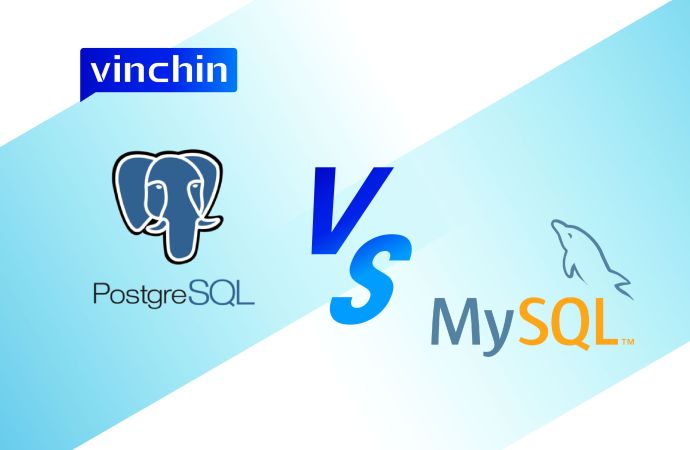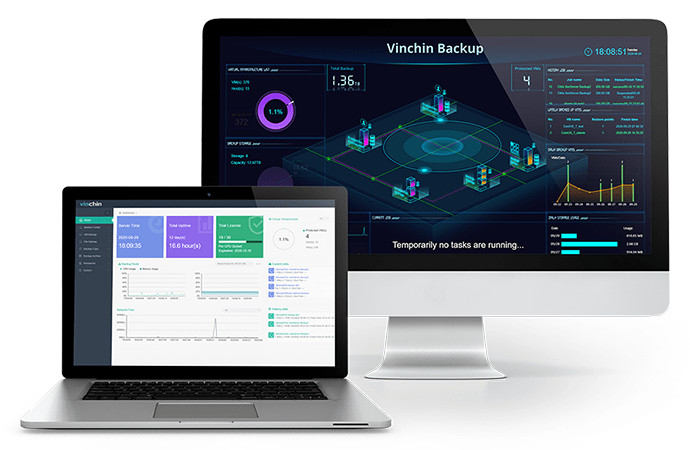-
What Is PostgreSQL?
-
What Is MySQL?
-
PostgreSQL vs MySQL
-
Full protection for databases in PostgreSQL and MySQL
-
Sum up

It is not surprising that you are told MySQL suits large-scale and complex analytical procedures better whereas MySQL is a better fit for website and online operations when you are looking for an open-source relational database management system. You may also hear about the extensive features of PostgreSQL like extensibility, and the dependability and speed of MySQL on the other hand. Because these viewpoints on the PostgreSQL vs. MySQL debate are generally accurate. But they are mostly equally performant in recent years.
Yet still, you may be confused about how they differ from each other and when to use them accordingly. This blog will make the differences and uses clear to you. Keep reading for answers.
What Is PostgreSQL?
PostgreSQL (originally POSTGRES) is a free and open-source object-relational database management system (ORDBMS) that supports SQL (relational) and JSON (non-relational) querying. People often turn to PostgreSQL to handle challenging and large-scale data processing for its ability to address exceptional database situations. And because of the extendibility of PostgreSQL, it supports almost any database. The latest version is 14.2 in 2022.
Features
PostgreSQL has a free open-source license and can be altered by creating plugins and incorporating functions of other programming languages to meet specific needs.
Robust features such as point-in-time recovery, granular access controls, asynchronous replication, Unicode, international character sets, etc. are provided.
Catalog-driven operation and JIT compilation provide high extensibility that allows for code writing from different programming languages.
It initiated multi-version concurrency control (MVCC) features that support concurrent reading and writing.
Built-in synchronous replication ensures that all users have access to the same quantity of information.
The majority of SQL data types are included, including INTEGER, VARCHAR, TIMESTAMP, and BOOLEAN.
It runs on nearly all operating systems and supports NoSQL and a wide variety of data types.
The database is fault-tolerant because of write-ahead logging.
Pros
Able to use third-party key stores in a full PKI infrastructure.
High scalability for unlimited database size and compatibility with multiple OS.
Allows for concurrent interaction with PostgreSQL while managing it simultaneously.
Maintains data integrity at the transactional level and protects against data corruption.
Backed by a large internal community and volunteer support network.
The fault-tolerance ability from write-ahead logging and point-in-time recovery.
Dynamic loading enables user-written code incorporation.
Users and roles object-level assignment.
Has data encryption techniques like AES and 3DES to protect data.
Cons
Currently available external solutions have a steep learning curve.
The information must be copied or exported to the next version.
Bulk loading operations may be CPU-bound.
Plans for executing queries are not cached.
Relatively slower than MySQL database.
Use case
PostgreSQL runs smoothly complex queries.
Government GIS: The PostGIS of PostgreSQL has many features of geometric forms processing such as line string that reduces the memory footprint, and locate-based services relied on GIS.
Financial industry: Its full ACID compliance makes it easier for online transaction processing and can be integrated with any software with mathematical operations.
Scientific data: PostgreSQL has excellent analytics and a powerful SQL engine to manage huge amounts of data.
Web technology: Functions in many frameworks and can be scaled out to include enough amount of database servers.
Manufacturing: It is a cost-effective choice for manufacturers that requires data storage efficiency, minimum downtime, and high extensibility to optimize supply chain performance.
What Is MySQL?
MySQL is a free open-source relational database management system (RDBMS) under GNU license and proprietary licenses as well. MySQL is the most popular database worldwide written in C and C++. Its server is multithreaded and multitasking built to run on production systems with high workloads. First developed by MySQL AB, now it is supported by Oracle Corporation. The most recent version is 8.0.28 in 2022.
Features
Two editions: open-source MySQL Community Server and proprietary Enterprise Server.
MySQL has the backup program, administrative client mysqladmin, and management GUI for easy use.
Client-server architecture in which the client requests instructions and the server responds with output.
ACID compliance with InnoDB and NDB Cluster Storage Engines.
Supports point-in-time recovery in case of system crashes.
The data security layer protects data from threats.
The cross-platform database runs on Linux, Windows, Solarix, and more.
Various storage engines are available for selection.
C, C++, Eiffel, Java, Perl, PHP, Python, Ruby, and Tcl API available.
Multithreading offers scalability for any data size.
Enable transaction rollback and cash recovery.
Tables are partitioned.
Pros
Ensures data protection with point-in-time recovery and auto-commit abilities.
Supported by a large community of developers.
Guarantees data integrity because of foreign key constraints.
Encrypt passwords during connection to provide a safe environment.
An open-source license is publicly available and easily customized.
Compatible with various operating systems.
One of the fattest databases.
Easier to set up and use.
Cloud-ready database.
Cons
MySQL does not fully adhere to the SQL standard for certain of the implemented capabilities, such as foreign key references when using storage engines other than the default InnoDB.
On January 19, 2038, 03:14:07 UTC, the built-in operations of the MySQL database, including UNIX TIMESTAMP(), will return 0.
System catalog-related transactions are not ACID compliant.
Stored routines cannot be cashed.
Use case
MySQL works well in OLAP and OLTP systems when read speeds are all that is required.
OLTP transactions: MySQL is effective and simple to scale to thousands of queries per second and complies with ACID.
LAMP open-source stack: MySQL is a component of the LAMP (Linux, Apache, MySQL, and PHP/Python/Perl) stack, while the latter plays a significant role in web services.
E-commerce platforms: Used with other non-relational databases to sync order data, and manage transactions and product catalogs.
PostgreSQL vs MySQL
| PostgreSQL | MySQL | |
| Architecture | Object Relational Database Management System (ORDBMS) | Relational Database Management System (RDBMS) system |
| Pronunciation | Post gress queue ell | My ess queue ell |
| License mode | MIT-style | GNU General Public License |
| Execution programming language | C | C/C++ |
| Management tool | PgAdmin | MySQL Workbench |
| Supported languages | Java, JavaScript, Python, R, Tcl, Lisp, Erlang, .NET, Delphi, C/ C++, Go, and others | C/C++, Delphi, Erlang, Go, Java, Lisp, Perl, PHP, R, Node.js |
| OS compatibility | MacOS, Solaris, Windows, BSD (FreeBSD, OpenBSD), Linux (Red Hat family Linux including CentOS/Fedora/Scientific/Oracle variants, Debian GNU/Linux and derivatives, Ubuntu Linux and derivatives, SuSE and OpenSuSE, other Linux operating systems) | Windows, MacOS, Linux (Ubuntu, Debian, Generic, SUSE Linux Enterprise Server, Red Hat Enterprises, Oracle), Oracle Solaris, Fedora, FreeBSD, Open Source Build |
| Syntax | SELECT * FROM records; | SELECT * FROM records; |
| Index | Partial indexes that organize data only from a table section, B-tree, hash, and expression indexes | Indexes stored on R-trees, B-trees, inverted lists and hash indexes with FULLTEXT indexes |
| Data types | Numeric, date/time, character, boolean, enumerated, geometric, network address, JSON, XML, HSTORE, arrays, ranges, composite | Numeric, date/time, character, spatial, JSON |
| Storage engine | Single | Multiple |
| Partitioning | RANGE, LIST | RANGE, LIST, HASH, KEY, and composite partitioning that combines RANGE or LIST with HASH or KEY sub-partitions |
| Coding difference | Case-sensitive (need to capitalize strings); UTF-8 syntax isn’t allowed; IF and IFNULL statements don’t work (use a CASE statement instead) | Not case-sensitive; Convert character sets and strings to UTF-8; could use IF and IFNULL statements |
| ACID compliance | Full ACID compliance | Only ACID compliant with InnoDB and NDB |
| SQL compliant | SQL-compliant | Partly SQL-compliant |
| Speed | MySQL is faster with read-only commands | PostgreSQL is slower than MySQL |
| Replication | Synchronous and cascading replication | One-way asynchronous replication |
| Ease of use | Steeper learning curve than MySQL | More user-friendly and quick to setup |
| Security | Group and user management, SQL privileges to different roles, user authentication using LDAP, PAM, and native window services | Group and user management, SQL privileges to different roles, IP-based client authentication and filtering with Kerberos and PAM |
| Who uses | Apple, BioPharm, Cisco, Debian, Etsy, Facebook, Fujitsu, IMDB, Instagram, Macworld, Red Hat, Skype, Spotify, Sun Microsystem, Yahoo | Facebook, Google, Flickr, GitHub, NASA, Netflix, Spotify, Tesla, Twitter, Uber, US Navy, WeChat, Wikipedia, YouTube, Zappos, Zendesk |
Full protection for databases in PostgreSQL and MySQL
We don’t have to go over those victims or news of economic damage from malware attacks, mis-deletion, or human errors to understand the necessity of backing up databases and preparing a DR (disaster recovery) plan in case of emergencies.
PostgreSQL and MySQL both provide their own tools for database backup and recovery, which generally are command-line programs. The backup and restore MySQL database with Mysqldump or PostgreSQL database with pg-dump and other utilities can be a bit complicated and a missing syntax may lead to the job failure.
A professional helper is necessary. Vinchin Backup & Recovery facilitates database protection for Oracle Database, MySQL, SQL Server, PostgreSQL, Postgres Pro, and MariaDB with smart and accessible strategies. It also supports protection for Linux & Windows Servers, and NAS.

Automatic database backup: Automate database backup under settable schedules and mail reports that alert admins of job status, system notifications, and storage use.
Multiple backup options: Choose from the full backup, differential backup, incremental backup, archive, and transaction log backup (vary with databases) and transfer the backups under an encrypted path for safety.
Save backup storage: Deduplicate and compress database backup data 50% before the process while not using the production CPU to save storage and cost.
Easier management: Manage all tasks of different databases to reduce administrative workload and overhead. An all-in-one solution for various databases and 10+ virtualizations.
Recovery simplicity: Restore databases with a simple 4-step wizard: choose the restore point, specify the restore destination, configure the restore strategy: override or create a new DB and lastly, submit.
Anti-Ransomware data protection: Safeguards database backups saved in the Vinchin server against malware threats with backup storage protection that rejects unauthorized visits, encrypted data paths, and more.
There are other advanced features for different databases, such as the database consistency check for SQL Server and the multithreading of Oracle. Here is a 60-day full-featured free trial of Vinchin Backup & Recovery for you to test below if you are interested.
Sum up
Postgres is used as the primary datastore for web, mobile, analytics applications, and geospatial industries because of its ability to run complicated queries, while MySQL is preferred by transactions and LAMP stack applications. They are different in some aspects but their performances are roughly comparable over time.
Vinchin Backup & Recovery supports the comprehensive protection of both PostgreSQL and MySQL databases and is designed to make the processes as easy as possible for users.
Share on:








